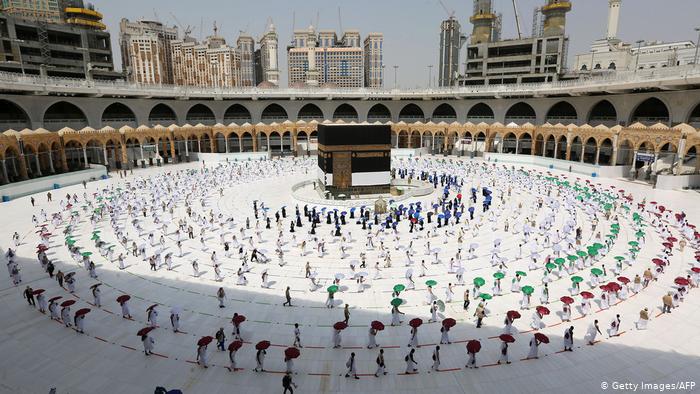Enormous crowds of worshippers thronged Mecca, Islam’s holiest city, on Friday for the biggest hajj pilgrimage in years, with more than two million expected to brave the scorching Saudi Arabian heat.
Pilgrims in white robes and sandals packed the ancient city, now dotted with luxury hotels and air-conditioned shopping malls, after flooding in on planes, buses, and trains for the annual rites.
This year’s hajj – one of the world’s biggest annual religious gatherings, with a tragic history of stampedes and other disasters – could break attendance records, officials said.
“As the hajj draws near, the Kingdom of Saudi Arabia prepares… for the largest Islamic gathering in history,” Minister of Hajj and Umrah Tawfiq Al-Rabiah said in a video published by the ministry this week.
Rites include circling the Kaaba, the large black cube in Mecca’s Grand Mosque, praying on Mount Arafat and “stoning the devil” by throwing pebbles at three giant concrete walls representing Satan.
More than two million people from more than 160 countries will attend, Rabiah said – a dramatic increase on the 926,000 from last year, when numbers were capped at one million post-pandemic.
In 2019, about 2.5 million people took part. Only 10,000 were allowed in 2020, at the height of the Covid-19 pandemic, rising to nearly 59,000 a year later.
The hajj is among the five pillars of Islam and must be undertaken by all Muslims with the means at least once in their lives.
– ‘Unbelievable feeling’ –
Travellers from around the world have been pouring into Jeddah’s modernised airport, some of them using streamlined visa services to disembark from planes straight onto buses to their accommodation.
Some 24,000 buses will be in service to ferry the pilgrims, as well as 17 trains capable of moving 72,000 people every hour, officials said.
“It is an unbelievable feeling that is very emotional,” Souad bin Oueis, a 60-year-old Moroccan pilgrim, told AFP after arriving on her first visit to Saudi Arabia along with her husband.
This hajj will be the biggest since the requirement for women to be accompanied by male guardians was dropped in 2021.
This year, the maximum age limit has also been scrapped, meaning thousands of elderly will be among those contending with Saudi summer temperatures that are expected to reach 44 degrees Celsius (111 Fahrenheit).
Mecca pilgrimages are a major source of income for Saudi Arabia, which is embarking on an ambitious plan to overhaul its largely oil-dependent economy. The hajj and year-round umrah rituals generate an estimated $12 billion annually.
An expansion project that involves scaling up infrastructure and transport supporting Mecca and Medina, where two of Islam’s holiest sites are located, is a key part of the economic plan as the kingdom looks to increase visitor numbers.
This year’s summer timing for the hajj, which follows the lunar calendar, will test the endurance of worshippers during the four-day, mostly outdoor ritual.
More than 32,000 health workers will be on hand to help fend off heatstroke, dehydration and exhaustion.






